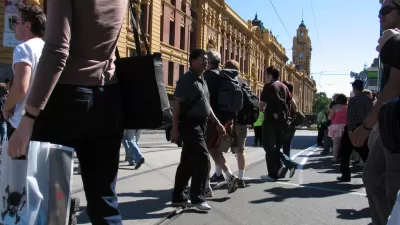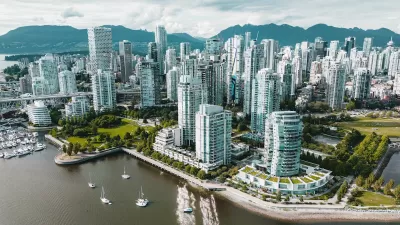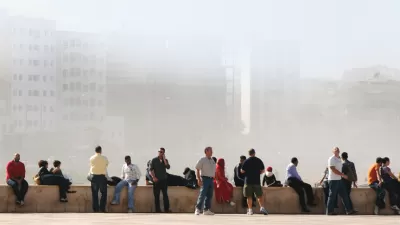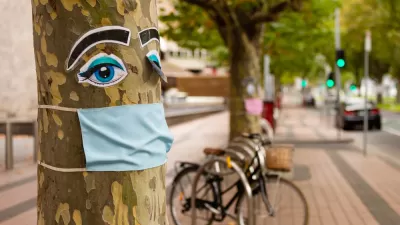Danish architect Jan Gehl and a steadfast group of local collaborators have transformed Melbourne from a lifeless 9-5 city into a preeminently livable place. Mitra Anderson-Oliver looks at the principles that have guided their work.

"Working with the City of Melbourne in 1993 (Gehl was invited by the council to conduct a Public Spaces and Public Life survey – and again for a 2004 update [PDF]), a key recommendation was to create opportunities for outdoor dining, mimicking the success of the grand boulevards of Paris and the communal squares of Rome," notes Anderson-Oliver. "The suggestion was ridiculed in a city famous for its icy southerlies and four-seasons-in-one-day climate. Yet, twenty years later, Melbourne boasts the highest ratio of street furniture per person in the world; outdoor cafes have increased from less than 50 in 1990 to over 600 today; the number of pedestrians in the city on weekday evenings has doubled; and Swanston Street has more pedestrians per day than Regent Street in London."
"Forty years of this close observation of human behavior (rather than a more theoretical engagement with urban studies: 'I am not much into reading', he confesses) lies behind Gehl’s core beliefs of treating pedestrians and cyclists 'sweetly' and the need for the city to be an 'invitation' to spend time, a welcoming and sustaining place for people to live. 'A good city is like a good party', he says. 'You know it’s working when people stay for much longer than really necessary, because they are enjoying themselves.'"
FULL STORY: CITIES FOR PEOPLE: JAN GEHL

Alabama: Trump Terminates Settlements for Black Communities Harmed By Raw Sewage
Trump deemed the landmark civil rights agreement “illegal DEI and environmental justice policy.”

Study: Maui’s Plan to Convert Vacation Rentals to Long-Term Housing Could Cause Nearly $1 Billion Economic Loss
The plan would reduce visitor accommodation by 25% resulting in 1,900 jobs lost.

Planetizen Federal Action Tracker
A weekly monitor of how Trump’s orders and actions are impacting planners and planning in America.

Wind Energy on the Rise Despite Federal Policy Reversal
The Trump administration is revoking federal support for renewable energy, but demand for new projects continues unabated.

Passengers Flock to Caltrain After Electrification
The new electric trains are running faster and more reliably, leading to strong ridership growth on the Bay Area rail system.

Texas Churches Rally Behind ‘Yes in God’s Back Yard’ Legislation
Religious leaders want the state to reduce zoning regulations to streamline leasing church-owned land to housing developers.
Urban Design for Planners 1: Software Tools
This six-course series explores essential urban design concepts using open source software and equips planners with the tools they need to participate fully in the urban design process.
Planning for Universal Design
Learn the tools for implementing Universal Design in planning regulations.
Caltrans
Smith Gee Studio
Institute for Housing and Urban Development Studies (IHS)
City of Grandview
Harvard GSD Executive Education
Toledo-Lucas County Plan Commissions
Salt Lake City
NYU Wagner Graduate School of Public Service





























